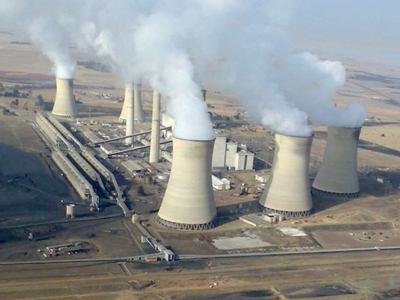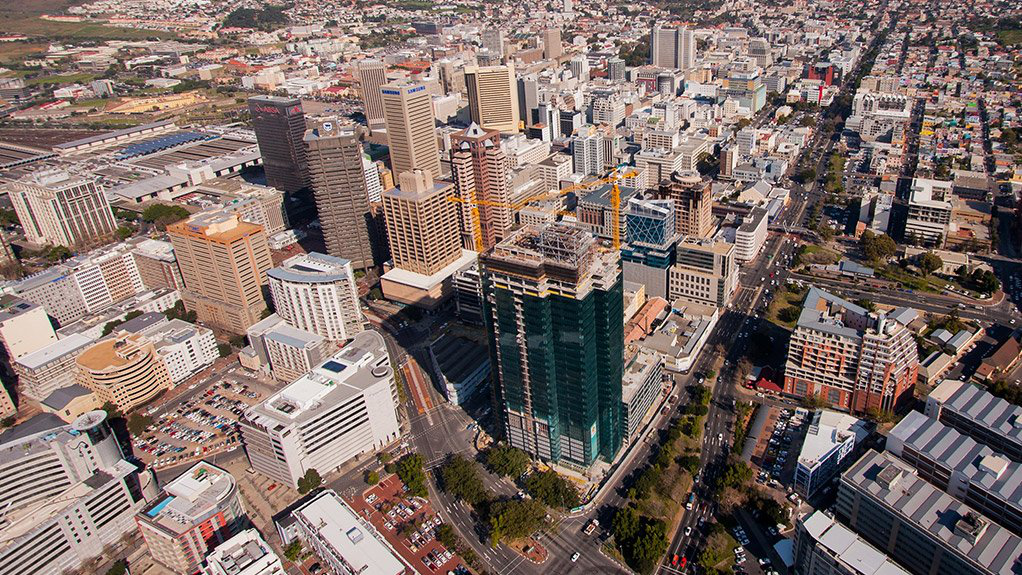
Latest News

To save Eskom from ruin, SA should ditch nuclear plan and cut coal power - study

Cape Town reprioritises budget to fund water projects






The South African construction industry is in a state of accelerated decline, says South African Forum of Civil Engineering Contractors (Safcec) CEO Webster Mfebe.
This is caused mainly by a lack of new contracts flowing from government’s purse, as well as increased violence and thuggery on local construction sites.
“Let’s put it in perspective,” says Mfebe, who has been Safcec CEO since 2013. “Public infrastructure spend has been declining. In the 2017/18 financial year government’s infrastructure budget was R947.2-billion. This was reduced to R834.1-billion in 2018/19. This is a whopping 12% nominal decrease.
“Also, in 2018 there was a 15.3% decline in the nominal value of contracts awarded, with the building industry hardest hit.
“Add to the mix that all of this is happening in an industry that is historically a big investor in capital expenditure and skills development.”
Mfebe notes South Africa can ill afford to lose any more depth in its construction industry.
Already, Group Five and Basil Read, among others, have filed for business rescue.
“Once we lose that capacity, it will take years to rebuild,” says Mfebe. “We’ll increasingly see the likes of the Chinese and the French coming to Africa to build infrastructure.”
It is not only the roster of available construction companies becoming smaller.
Many highly skilled engineers and technical staff are in the process of leaving the country. Safcec has identified 110 who have already left, as they flee the low-growth environment and increasing violence on construction sites.
“This has to be attended to. The conditions contractors face are fast deteriorating,” notes Mfebe.
One of the most notable cases in recent times have been the Aveng/Strabag joint venture (JV) quitting the Mtentu bridge project, in the Eastern Cape, owing to continued violent protests within the surrounding communities...
read more

The City of Cape Town has reprioritised R2bn of its budget to fund seven additional water projects.
“We have looked at ways to fund a first phase of water supply projects by relooking at our spend across the city to see which non-water related projects we can temporarily postpone, while protecting funds for basic and emergency services,” said the executive mayor Patricia de Lille.
The first phase projects earmarked for these funds are the desalination plants at Monwabisi, Strandfontein, the V&A Waterfront and Cape Town Harbour. The Atlantis and Cape Flats Aquifer projects and the Zandvliet water recycling project make up the first seven emergency water projects of this phase.
The city made this announcement amid reports that their dam levels have dropped, with dam storage levels at 36.8% and useable water at 26.8%.
“Our dam levels have declined by 1% over the past week. This could be attributed to the high winds and hot weather, which contributed to evaporation. We have managed to halve Cape Town’s water usage with the help of 51% of our water users, who have put tremendous efforts into saving water,” said De Lille.
According to the city, water users have exceeded their water usage by 82-million litres per day, with the required level set at 500-million litres per day.
De Lille appealed to all water users, especially the 49% who are not saving water yet, to join efforts to beat the drought.
“We need to do more to bring our usage down, while at the same time pulling out all of the stops to ensure that we implement various projects for additional water supply to help see us through to winter 2018.”.......read more

Finance Minister Malusi Gigaba estimated that over the medium-term expenditure framework, government would spend R948bn, or 5.9% of gross domestic product (GDP), on infrastructure in a bid to boost growth and employment.
This is less than the R987.4bn Gigaba’s predecessor, Pravin Gordhan, announced in the 2016 medium-term budget policy statement.
Tabling his first medium-term budget policy statement in Parliament on Wednesday, Gigaba said the majority of economic infrastructure would be provided by state-owned companies, which would spend R402.9bn in the medium term.
He said municipalities were projected to spend R197bn and provincial governments R208bn in the medium-term period.
Education was projected to spend R44bn building and refurbishing schools, libraries and laboratories.
"Government is embarking on a number of initiatives in infrastructure in order to improve the quality of our infrastructure spending. This includes maintenance of existing infrastructure, improved procurement of infrastructure projects, and better conditional grant terms to eliminate inefficiencies and underspending," Gigaba said.
He said Cabinet had approved a budget facility for infrastructure, which aimed to overcome the shortcomings in the planning and execution of large infrastructure projects.
The facility had already started considering proposals for construction in water, rail, broadband and court buildings, he said.......read more

|
Mr Tiisetso RatauMining Engineer |

|
Mr Charles DurhamProjects Manager |
$('#standalone').popup({
color: 'white',
opacity: 1,
transition: '0.3s',
scrolllock: true
});
#standalone {
transform: scale(0.8);
}
.popup_visible #standalone {
transform: scale(1);
}
background:false will enable interaction with background content (hover, click, etc.), while the popup is visible, as the background div will not be added to DOM.
horizontal and vertical will set the position.
keepfocus:false will prevent locking tabbing inside of popup, and leave a focus on the opening element.
autozindex will keep the popup on top of all other elements on the page.
$('#active_background_fixed').popup({
background: false,
horizontal: 'right',
vertical: 'bottom',
keepfocus: false,
autozindex: true,
blur: false
});
absolute:true keeps the popup in place when scrolling.
focuselement:'closebutton' will focus the Close element even if keepfocus is false.
$('#active_background_absolute').popup({
absolute: true,
background: false,
keepfocus: false,
focuselement: 'closebutton'
});
type:'tooltip' will use the opening link as an anchor for positioning.
An anchor can be explicitly set with tooltipanchor option.
offsetleft and offsetleft will set the offset.
$('#tooltip').popup({
type: 'tooltip',
tooltipanchor: $('#tooltip_open'),
offsetleft: 0,
offsettop: '-15',
vertical: 'top',
horizontal: 'center'
});
$('#fall').popup({
beforeopen: function () {
alert('beforeopen');
},
onopen: function () {
alert('onopen');
},
onclose: function () {
alert('onclose');
},
opentransitionend: function () {
alert('opentransitionend');
},
closetransitionend: function () {
alert('closetransitionend');
}
});
See other examples on JSBin: